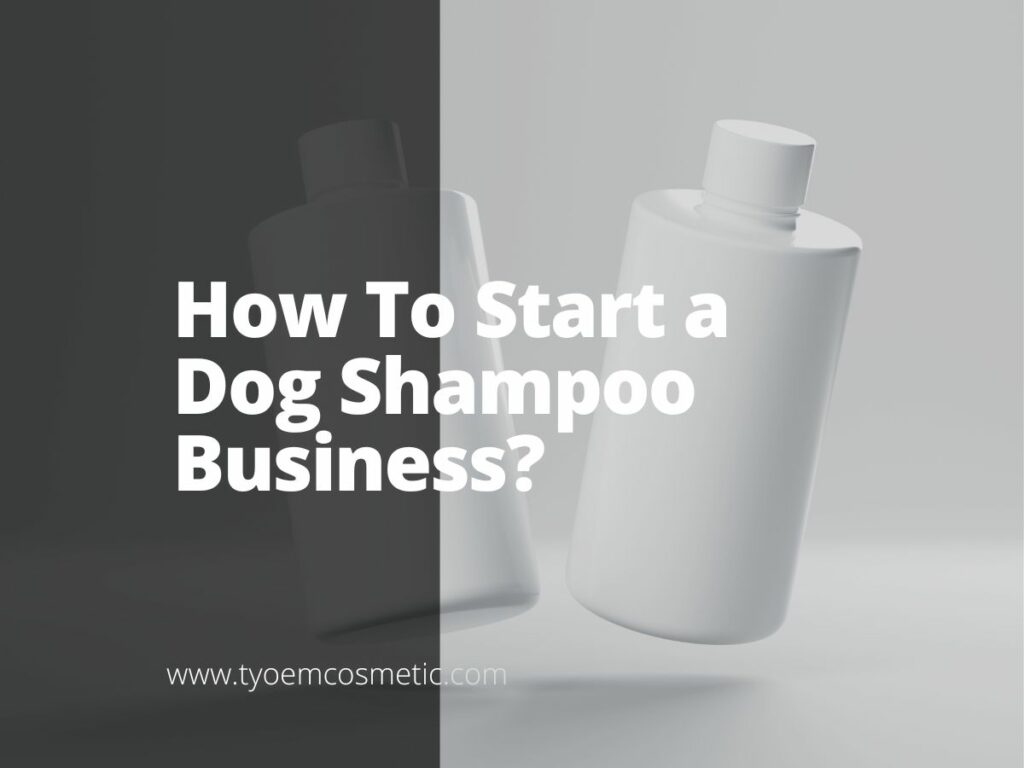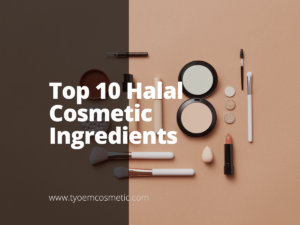Has anyone thought about the unique niche of pet care, specifically, how to start a dog shampoo business? This sector combines the love for pets with the thriving world of specialized grooming products.
As an expert in the cosmetics and skincare industry, I bring a wealth of knowledge in product development, market trends, and client needs, particularly in niche markets like pet care.
Starting a dog shampoo business is not just about mixing ingredients; it’s about understanding pet needs and market demands and creating a product that stands out.
In this ultimate guide, we’ll explore the essential steps from concept to launch, ensuring your dog shampoo brand not only enters the market but grows in it.
Read on to learn more about this exciting and rewarding journey.
Step#1 Understanding the Dog Shampoo Market
Entering the dog shampoo market requires a strategic understanding of the industry’s landscape. This market is unique. Here are the essential steps to gain a thorough understanding of the dog shampoo market:
- Have a Market Overview: The first thing to do is explore the overall landscape of the dog shampoo market. Look at the major players, their product offerings, and market positioning. For example, noticing a surge in organic dog shampoo brands could indicate a shift towards natural pet care products.
- Getting the Market Report Highlights: Next is to get into recent market reports to extract key insights. Look for data on growth rates, consumer preferences, and emerging trends. I found that reports highlighting consumer preferences for hypoallergenic options greatly help in product development decisions.
- Segmentation Analysis: Lastly, is to conduct a segmentation analysis to understand the different consumer groups within the market. This involves identifying segments based on factors like dog breed, age, skin type, and owner preferences. Specific segments can lead to effective marketing strategies.

Step#2 Market Research and Competitive Analysis
Building on an understanding of the dog shampoo market, the next step involves conducting thorough market research and competitive analysis. Here are the key processes involved in this step:
- Gathering of Industry Data: Begin with understanding market size, growth trends, and potential opportunities. This involves accessing industry reports, analyzing sales data, and engaging with market research firms. I believe TY Cosmetic regularly reviews market reports to stay updated on industry trends.
- Detailing Competitive Analysis: Next is to identify key players in the dog shampoo market, and study their product offerings, pricing, and marketing tactics. This analysis not only highlights gaps in the market but also helps in positioning your product effectively against established brands.
- Engaging with Potential Clients and Industry Experts: Lastly, engaging in some surveys, interviews, and feedback from businesses in the pet care sector provides valuable insights into customer needs and preferences. This direct engagement helps tailor your products to meet specific industry requirements.

Step#3 Developing Your Product Line
Armed with market insights and an understanding of competition, the next is to develop a product line. This stage involves transforming market insights into tangible products. Here are the key steps:
Identifying Unique Selling Propositions
The first step is to identify the unique selling propositions (USPs) for the pet shampoo line, like a dog shampoo. This involves pinpointing what makes your products distinctive, such as innovative ingredients, environmentally friendly packaging, or specialized formulas for different dog breeds or skin types. This initial step shapes the identity of your product line and ensures it aligns with market demands and client expectations.
Collaborating with Skilled Chemists
Next, collaborate with skilled chemists and manufacturers who specialize in the pet care industry. They will guide you in formulating shampoos that are both effective and safe, considering crucial aspects like pH balance, fragrance, and ingredient sourcing. It’s also important to comply with industry regulations and standards to ensure the safety and efficacy of your products.

Prototype and Testing Phase
Finally, move to the prototype and testing phase. Start by producing small batches of your shampoo for trials. Engaging with pet care professionals, groomers, and veterinarians for testing is crucial. Their feedback is invaluable for refining your product to meet professional standards and effectively cater to the needs of your clientele. The goal of this phase is to ensure your product range stands out in the competitive market.
Step#4 Creating a Business Plan
With a clear idea of your product line, it’s time to create a comprehensive business plan. This document serves as a roadmap, guiding your business from inception to growth and profitability. Here’s how to approach this:
Defining Business Objectives and Vision
Start with clearly defining your business objectives and vision. This involves setting specific, measurable, attainable, relevant, and time-bound (SMART) goals. For example, you might aim to capture a certain market share within the first two years. These objectives should reflect the unique needs your business intends to fulfill in the market, providing a clear direction and purpose for your venture.
Focus on Operational Planning
Next, concentrate on operational planning. This section should detail the daily workings of your business, including production schedules, quality control measures, and inventory management. Outline the roles and responsibilities within your team, emphasizing how each member contributes to the business’s success. Operational efficiency is crucial for ensuring timely product delivery and maintaining consistent quality.
Highlighting Sustainability and Ethical Practices
Following this, highlight your commitment to sustainability and ethical practices. In today’s market, businesses are increasingly scrutinized for their environmental impact and ethical standards. Describe your strategies for sustainable sourcing, eco-friendly packaging, and any cruelty-free certifications. This not only caters to environmentally conscious consumers but also positions your business in line with evolving industry trends.
Detailing Projections and Analysis
Moving forward, it’s time to get a detailed projection and analysis. This includes your initial investment, ongoing operational costs, revenue streams, and profitability forecasts. It’s crucial to present realistic financial projections to potential investors and stakeholders, demonstrating the viability and growth potential of your business.

Step#5 Legalities and Compliance
With your business plan in place, the next crucial step is the legalities and compliance requirements. This step is about knowing legal boundaries and adhering to industry regulations. Here are the key processes involved:
- Registering Your Business and Obtaining Licenses: Begin by registering your business with the relevant local and federal authorities. Depending on your business location and structure, this may include acquiring a general business license, a seller’s permit, etc. related to pet care and cosmetic products.
- Ensuring Product Safety and Regulatory Compliance: Next, focus on product safety and compliance with regulations, especially if you’re operating in regions like the United States where the FDA oversees pet grooming products. This step involves ensuring that your ingredients are safe and non-toxic.
- Protecting Your Intellectual Property: Following this, take steps to protect your intellectual property. This includes trademarking your brand name and logo and securing patents for any unique formulas or processes you develop. It’s to ensure that your business does not infringe on existing trademarks.
- Establishing Compliance Protocols: Finally, establish ongoing compliance protocols within your business operations. This includes regular reviews of regulatory updates, conducting internal audits, and training staff on compliance matters.

Step#6 Production and Supply Chain Management
Once legal and compliance aspects are handled, the focus shifts to production and supply chain management. It involves overseeing the entire process of product creation. Here’s how to manage this phase:
- Establishing Raw Material Sourcing: First, focus on establishing reliable sourcing for high-quality raw materials.According to Procurious, a study found that 9 in 10 (88%) of global consumers surveyed would choose to buy from companies with ethical sourcing structures in place over ones that did not.
- Optimizing the Production Process: Next, optimize your production process. Develop a streamlined manufacturing approach that prioritizes efficiency and quality control. This will include investing in the right manufacturing equipment, implementing quality checks, and ensuring compliance with industry standards.
- Managing Logistics and Distribution: Following the production, manage logistics and distribution effectively. Plan for adequate storage, maintain optimal inventory levels and establish efficient distribution channels. It’s crucial to ensure that your products are delivered on time and maintain their quality.

Step#7 Building an Online Presence
With production and supply chains established, building an online presence is your next milestone. A strong online presence helps in connecting with clients. Here’s how to effectively build your online presence:
Developing a Professional Website
First, create a professional website that serves as the digital storefront for your business. As a veteran in this field, this website should be user-friendly, visually appealing, and informative, showcasing your product range, company values, and contact information. Ensure it’s optimized for search engines to improve visibility and include e-commerce functionality if you plan to sell directly to clients online.
Engaging on Social Media Platforms
Next, establish a presence on relevant social media platforms. Choose platforms where your target audience is most active, such as Instagram, LinkedIn, or Facebook. From my experience, it is helpful to regularly post engaging content, interact with your audience, and use these platforms to showcase your products, share industry news, and promote your brand.
Implementing Content Marketing
Then, implement content marketing which involves creating valuable content like blog posts, videos, and infographics that resonate with your target audience. Content marketing helps in establishing your brand as an industry authority and improves your website’s search engine ranking (SEO). TY Cosmetic regularly publishes blog posts on skincare trends, which drives traffic to their website and engages their audience.
Utilizing Email Marketing
Finally, create an email marketing to reach out to potential and existing clients. Collect email addresses through your website and social media channels, and send regular newsletters, product updates, and exclusive offers. Email marketing is an effective way to maintain client engagement and drive sales. Using this strategy is essential for reaching and engaging your target audience in today’s digital marketplace.
The table below outlines key aspects of utilizing email marketing as a strategy to engage with potential and existing clients, highlighting how it effectively maintains client engagement and drives sales in today’s digital marketplace:
| Email Marketing Strategy | Description | Impact on Client Engagement and Sales |
| Collection of Email Addresses | Gathering email addresses through website sign-ups and social media channels to build a mailing list. | Expands Reach: Collecting emails allows for the creation of a substantial database of potential and existing clients, expanding the reach of marketing efforts. |
| Regular Newsletters and Updates | Sending out regular newsletters and product updates to keep clients informed about new offerings, company news, and industry insights. | Maintains Engagement: Regular newsletters keep the brand at the forefront of clients’ minds, maintaining ongoing engagement and interest. |
| Exclusive Offers and Promotions | Using email to send exclusive offers, discounts, and promotions to subscribers, creating an incentive for purchases. | Drives Sales: Exclusive email-only offers can encourage recipients to make purchases, effectively driving sales and enhancing customer loyalty. |
Step#8 Marketing and Sales Strategies
As your online presence grows, it’s time to develop focused marketing and sales strategies. These strategies are key to establishing brand recognition. Here’s how to approach marketing and sales for your business:
- Identifying Target Market Segments: Start by identifying specific segments of the pet care market that your dog shampoo products cater to. This could include professional grooming salons, pet stores, or veterinary clinics.
- Developing a Comprehensive Sales Plan: Next, develop a comprehensive sales strategy. Decide on your sales channels, which could range from direct sales to businesses, online sales through your website, or distribution through wholesalers.
- Investing in Digital Marketing: Following this, invest in digital marketing efforts. Digital marketing is crucial in today’s business landscape, offering the ability to reach a broad audience at a relatively low cost. It allows for precise targeting and tracking of your marketing efforts, making it an indispensable tool.
Step#9 Launching Your Business
With marketing and sales plans in hand, the next is to be ready to officially launch the business. This step is about making a strong first impression and beginning your journey toward growth and success. Here’s how to effectively do it:
- Planning a Memorable Launch Event: Begin by planning a strategic launch event that resonates with your brand identity and appeals to your target audience. This could be a physical event like a trade show or an online launch through a live stream.
- Engaging in Targeted Promotional Activities: Next, engage in targeted promotional activities to coincide with your launch. This involves social media campaigns, email marketing, special introductory offers, or collaborations with influencers and businesses in the pet care sector.
- Monitoring Feedback and Making Adjustments: Following the launch, it’s important to monitor feedback closely and adjust your strategies accordingly. Keep an eye on sales data, and customer reviews, and consider conducting post-launch surveys to gauge consumer reactions.

Step#10 Expanding Your Reach
Once your dog shampoo business is established, it’s important to focus on expanding your reach to secure its growth and longevity. Here are effective steps to expand your reach:
- Forming Strategic Business Collaborations: Start by forming collaborations with businesses that complement yours, such as pet grooming services, veterinary clinics, or pet accessory brands. These partnerships can offer new distribution channels and opportunities for cross-promotion.
- Participating in Community Events: Next, participate in community events and charitable initiatives that align with your brand values. This not only increases your brand visibility but also builds a positive image and fosters loyalty among existing clients.
- Staying Ahead with Market Trends and Innovations: Lastly, continuously stay ahead of market trends. This involves conducting research and developing new product formulations, scents, or packaging innovations that appeal to current client preferences.

Step#11 Sustaining and Growing Your Business
Once done with how to expand your business reach, this last phase is about maintaining your market position and scaling up your operations in a sustainable manner. Here are the essential steps in this process:
- Integrating Advanced Production Technologies: First step is by implementing the latest technologies in your production processes. This can significantly enhance manufacturing efficiency and reduce operational costs. Advanced technologies like automated systems and AI-driven quality control can streamline production.
- Fostering a Culture of Innovation: Then, focus on fostering a culture of innovation within your organization. Encourage your team members to think creatively, be it in product development, marketing, or customer service.
- Prioritizing Client Assessment and Engagement: Finally, actively engage in client assessment and feedback. Utilize digital tools for customer relationship management (CRM) and engage with your clients through surveys, social media interactions, and other feedback mechanisms.

Conclusion
Going through the journey of “How To Start a Dog Shampoo Business” is made clearer with this step-by-step guide, offering essential insights from market understanding to business sustainability. Each step is crafted to empower entrepreneurs to establish a successful foothold in the dynamic pet care industry.
For those seeking specialized support, TY Cosmetic offers expert services tailored to the pet care industry. Our team is dedicated to helping businesses to grow in this competitive market. Feel free to contact us today!





















